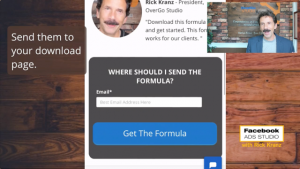 How to create your buyer personas, analyze and segment your contact database, and target your messaging to nurture and convert contacts.One of the most powerful tools for building and sustaining customer relationships is email marketing. It’s cheap, easy-to-use, and is able to reach large quantities of people in no time at all. The problem is you’re probably doing it wrong.
How to create your buyer personas, analyze and segment your contact database, and target your messaging to nurture and convert contacts.One of the most powerful tools for building and sustaining customer relationships is email marketing. It’s cheap, easy-to-use, and is able to reach large quantities of people in no time at all. The problem is you’re probably doing it wrong.
All brands who elect to implement email marketing strive to craft emails that drive recipients to whatever action the brand desires. I am not saying this is a bad thing; you should always have an action-oriented goal in place with any email that is sent on behalf of a brand. However, instead of worrying so much about what you want the recipient of the email to do, think for a second, what action might your target audience want to do. It all starts with your buyer personas.
How to Create Buyer Personas
A buyer persona is a semi-fictional representation of your ideal customer based on market research and real data about your existing customers. A detailed buyer persona will help you determine where to focus your time, guide product development, and allow for alignment across the organization. As a result, you will be able to attract the most valuable visitors, leads, and customers to your business.
In order to craft emails targeted towards your buyer personas, you must first establish what those unique buyer personas look like. When creating your buyer personas, consider including customer demographics, behavior patterns, motivations, and goals. The more detailed you are, the better.
They can be created through research, surveys, and interviews of your target audience including a mix of customers, prospects, and individuals outside of your contact database that are a good fit for your products and/or services.
Tip: Leverage your sales team for information on the contacts they’re interacting with to understand more about the contacts, their FAQs, and their pain points.
Analyze and Segment Your Contact Database
You should have already analyzed your contact database to understand more about your customers and prospects when establishing your buyer personas. However, now it is important to understand the capacity to which you can segment your contact database to target your messaging based on buyer personas.
For example, imagine you are a retail store focused on clothing; one of your buyer personas may be males between the ages of 13-18 who play competitive sports and live in wealthy, suburban neighborhoods (I would encourage you to get even more detailed when creating your buyer personas, however for this example’s purpose, this will have to do). Now imagine we want to target this buyer persona via email to download a coupon for an upcoming sale. Here are some of the questions you need to ask yourself:
- Can I segment based on gender?
- Can I segment based on age?
- Can I segment based on involvement in competitive sports?
- Can I segment based on postal codes of specific geographical areas?
Next, understand which characteristics your contact database will allow you to segment. If you lack data on sports involvement, you will be unable to segment based on that characteristic. Make sense?
Tip: If you are lacking data for a characteristic that would be beneficial towards segmentation for marketing purposes, add new fields to your web forms that will capture important persona information. If you want to segment based on job title for example, be sure to add “Job Title” as a field on your web forms.
Target Your Messaging
After segmenting distribution lists for email communications to specific buyer personas, you need to figure out what to say. More importantly, you need to figure out what the recipients want to hear based on their situation.
Here are some tips for crafting a specific email to connect with your buyer persona:
- Leverage the pain points identified through research, surveys, interviews, and feedback from the sales team. More specifically, what problems of theirs can your products and/or services solve?
- Speak their language. Structure your sentences like your audience would; speak to them on their level.
- Provide them with a beneficial offer from their perspective. Instead of creating an offer based on the goals of your business, step into their shoes and determine an offer that they would find advantageous.
- Implement content personalization if possible. People love to feel like brands are reaching out to them personally; try including the contact’s first name in the subject line and their company name somewhere in the body to see the impact of personalization.
Take these tips into consideration when crafting your email messaging and always be sure to measure and analyze the results. Remember, your messaging can ALWAYS be improved.
Now it’s time to go get ‘em! Good luck!
(161)




